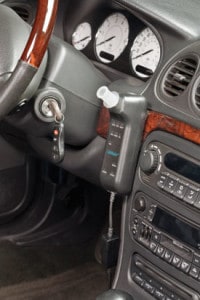 If you are facing consequences for a DUI or other drunk driving conviction, you may be on the lookout for an ignition interlock device to fulfill the terms of your court order or DMV restrictions. You could even be looking into the devices to protect your family member from ever getting into a drunk driving situation, to begin with. Not everyone knows what the devices are, but, you may have heard about them on the news or through the grapevine. You may only know that an ignition interlock device works to keep people sober when driving, but, how does that work, exactly?
If you are facing consequences for a DUI or other drunk driving conviction, you may be on the lookout for an ignition interlock device to fulfill the terms of your court order or DMV restrictions. You could even be looking into the devices to protect your family member from ever getting into a drunk driving situation, to begin with. Not everyone knows what the devices are, but, you may have heard about them on the news or through the grapevine. You may only know that an ignition interlock device works to keep people sober when driving, but, how does that work, exactly?
Generally speaking, the entire process is simple:
- A driver “blows” or hums into the device in order to produce a breath sample.
- That breath sample is quickly tested by the device for the presence of alcohol or, the person’s blood alcohol concentration (BAC).
- If the BAC measures above the device’s pre-determined limit (usually, anywhere from .02 – .03 percent), then, the driver is prompted to take another test. Depending on local regulations, that driver can have a few chances to prove their sobriety before the device goes into “lock out” mode, eliminating any chance of that person committing another drunk driving mistake.
- On the other hand, if the sample does not cross that line, then driving begins as normal and can continue through the “rolling re-tests” at that level.
Seems simple, right? But HOW does the device know the BAC level? Biology and technology. High-quality ignition interlock devices use “alcohol specific technology” to determine the presence of alcohol in the breath sample and the amount of alcohol in that sample. That technology comprises platinum electrodes that react only to the alcohol in the sample that is provided and then producing an electric current that is measured for the amount of alcohol present. This process detects the alcohol in beer, wine or liquor but does not yield “false positive” results from smoking, certain foods or vehicle exhaust, as older types of ignition interlock did. The device will know if you are intoxicated based upon the presence of alcohol in your submitted sample and your BAC level and will take care of the rest by letting you drive, stopping you from driving or gently persuading you to pull over and stop your engine.
The best way to learn how an ignition interlock device works is to ask an expert: a local ignition interlock service provider. They have the knowledge, understanding and experience you need to answer questions about a potential interlock installation, and are always glad to explain the device to you or anyone else wondering how they work.

Leave a Reply
You must be logged in to post a comment.